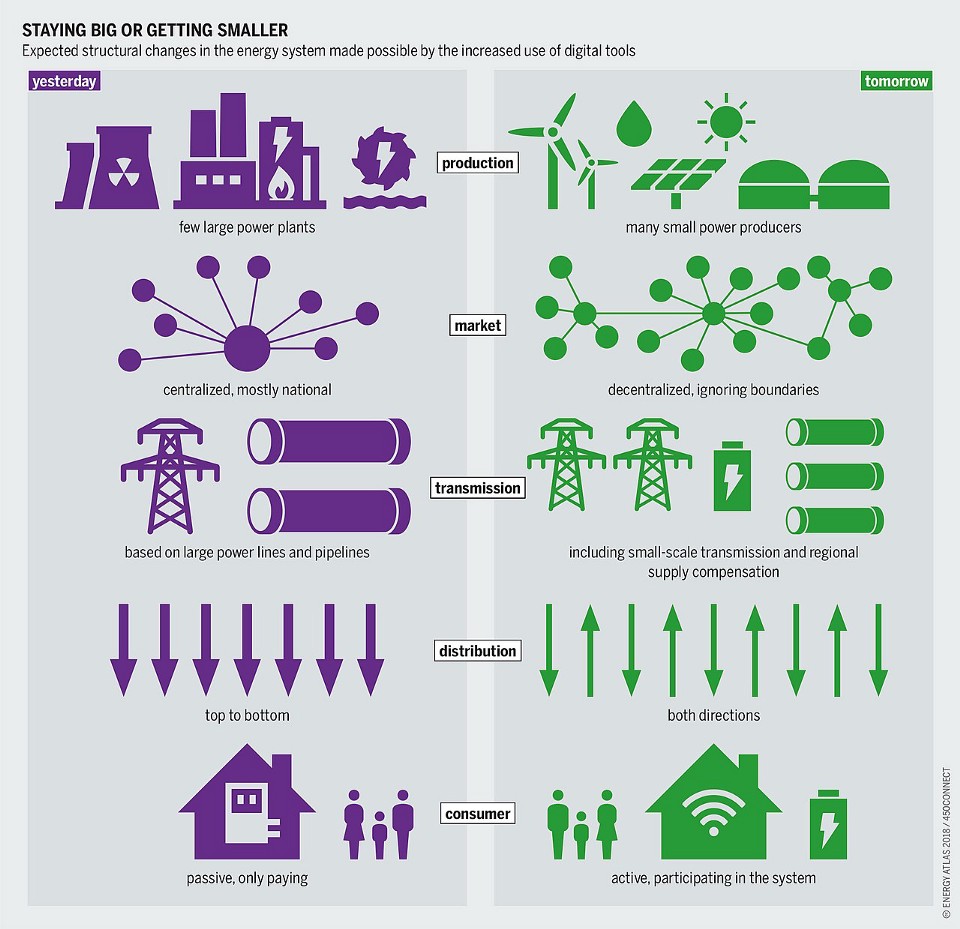Unibright, a blockchain technology development firm, announced today it is working with an innovative German startup on providing renewable energy by decentralized hydroelectric power plants. Unibright Solutions provided two initial workshops to prepare the usage of the Unibright Framework for energy trading, monitoring, data analysis, and integration.
The Unibright team of blockchain specialists, architects, developers and consultants have been asked to provide the needed blockchain-based solutions for energy trading, metering, data analysis, and integration.
Unibright on the evolution of the energy market and systems
In the last decades, established centralized fossil fuel-based energy systems have been facing major challenges, e.g. the critical consideration of (carbon-)emission, environmental pollution, long-distance transmission, and energy crisis in general.
As a partial answer, to solve these mentioned issues, the concept of a “smart grid” has been introduced: Communication technology is used along with interconnected power systems and smart metering to improve the utilization of renewable energy sources from various sources.
The currently needed, ongoing transition and structural changes are summarized in the chart below:

Project “Stromboje” (power buoy) — a novel hydroelectric power plant
The German company Wasserkraft Mittelrhein is a highly innovative player, aiming to generate clean and renewable energy by the usage of novel hydroelectric power plants (buoys). These power buoys generate electricity by converting the power of a river’s current using a more than 8 feet long rotor. Weighing over 7 tons and having a length of around 36 feet, one power buoy can generate electricity to 100 households.
The current pilot phase of the project, in which Unibright is engaged as the blockchain technology provider — installs 16 power buoys into the river rhine generating approx. 6.4M kilowatt-hour of electricity per year. Thereby, over 1,000 households can be served with energy, and in return, more than 6,000 tons of greenhouse gas, which would have been emitted using traditional coal-powered power plants, can be saved. One of the main advantages of these novel power plants compared to solar energy and wind turbines, is the fact that they are able to provide power constantly, using the river’s current.
Workshops
The pilot started with two workshops by Unibright Solutions, a one-stop resource for enterprise-grade blockchain consulting; to explore the potential and the various fields where blockchain technology can be utilized within the solution:
- Energy trading: The main goal of an alternative energy source is to provide energy that is consumed directly and locally. Remaining energy has to be fed/routed to the main network provider and is compensated according to the “German Renewable Energy Sources Act” (EEG 2017).
- Metering: The constant flow of produced energy, consumed energy and routed energy has to be metered and monitored to provide the correct accounting and announcement of surplus energy for the main network provider.
- Data Analysis: Being a pilot project in a new segment of alternative energy, the accumulated data on energy production, consumption and feed is a value on its own. Data ownership, governance, and monetization of data are considered as a dedicated vertical of the startup.
- Integration: As with all technical oriented there is a lot of integration work. Not only internally within the project (energy sources, consumers), but also externally towards auditors, regulators, network providers, accounting units and many more.
Unibright Framework
The Unibright Framework, a unified framework for blockchain-based business integration will be used to provide two major pillars of the productive solution: smart contract generation and integration. There is potential for different levels; where smart contracts can act within the solution, e.g. representing energy tokens or data tokens, or establishing a contractual relationship between energy producer and consumer including automatic billing and payment. This will be done by dedicated Templates within the Unibright Workflow Designer and code generation by the Unibright Lifecycle Manager.
The internal data and process modeling have to be connected and integrated into existing data standards and demands from external parties like auditors, regulators, and network providers. This will be done by dedicated smart adaptors within the Unibright Connector.
The Unibright Explorer will be used to provide Dashboards to monitor the internal transactions and APIs for “external” users (like consumers) to monitor their consumption and data usage.
“Currently, the first pilot buoy has been installed in river Rhine, mainly to collect data on the river’s current and to provide information for external auditors in terms of environmental sustainability and stability of the construct. All innovative ideas, milestones, and roadmaps have to be adjusted according to the regulator and external funding, and the goal is to have 16 buoys installed, producing energy and using Unibright technology by the beginning of 2021.”
– The Unibright team
 cryptoninjas.net
cryptoninjas.net